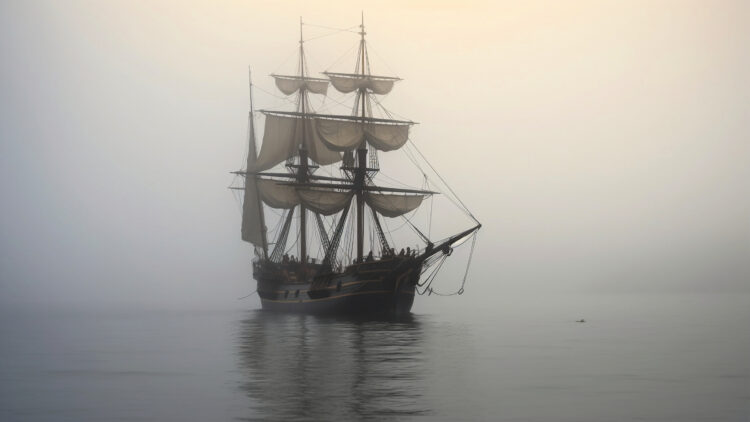On December 5, 1872, the British brig Dei Gratia stumbled upon an abandoned ship named the Mary Celeste in the Atlantic Ocean. The American vessel, which had departed from New York City eight days earlier and was bound for Genoa, Italy, should have safely reached its destination by then. Instead, it was found floating adrift and deserted, setting the stage for one of maritime history’s most enduring mysteries.
The discovery of the Mary Celeste: An enigma unfolds
Under the command of David Morehouse, the crew of the Dei Gratia found the Mary Celeste eerily silent, indicative of the disturbing absence of life onboard. When they boarded the ship, they were greeted by a chaotic scene: its sails were raised but torn, the pump was disabled, the sounding rod lay abandoned on the deck, and the cabins were submerged in water.
What was most striking was that the personal effects of the Mary Celeste’s passengers and crew remained untouched. However, crucial navigational instruments were missing, sparking urgent questions about the events that had transpired in the days leading up to their arrival.
As the Dei Gratia crew navigated the Mary Celeste towards Gibraltar, the mysterious absence of its captain, Benjamin Briggs—along with his wife, Sarah, and their two-year-old daughter, Sophia—puzzled investigators. An inquiry conducted by the British Vice Admiralty Court was unable to find any evidence of foul play or struggle, leading to widespread speculation.
A plethora of theories exist surrounding the events involving the Mary Celeste
Over the years, theories regarding the crew’s fate have ranged from the plausible to the far-fetched.
Initial theories pointed to piracy or mutiny, but these were dismissed due to a lack of supporting evidence. Additionally, reports of alcohol-fueled madness among the crew were countered by their strong records as seasoned sailors.
Some historians suggest that the Mary Celeste may have been caught in a waterspout, causing Captain Briggs to panic and abandon ship. Another theory posits that faulty cargo could have caused an explosion, prompting the crew to flee in fear. Notably, investigations revealed that nine barrels of alcohol were empty, and the porous nature of their red oak construction may have contributed to the loss of vapors that resulted in the purported explosion.
Nonetheless, despite decades of investigations (and rumors), the precise events of that fateful night remain elusive. Fictional portrayals in books, films, and documentaries have only added layers to the legend, fueling public fascination.
Mary Celeste: A modern perspective
In recent years, documentarian Anne MacGregor revisited the Mary Celeste mystery, employing modern maritime technology to gain new insights. Her research indicated that the ship could have drifted from its last recorded position, within sight of land, to where it was discovered—a journey that could have occurred without a crew.
This led MacGregor to theorize that Captain Briggs may have rationally abandoned the ship, believing it was in peril due to miscalculations and faulty equipment.
Her investigation highlighted that the ship’s last entry had been made on November 25, as it neared land, suggesting that the crew likely abandoned ship that very morning. This decision might have stemmed from a combination of rough weather, a malfunctioning chronometer, and possibly faulty pumps from previous cargo.
Despite thorough research and theories, the fate of the Mary Celeste and its crew stands as one of history’s biggest disappearances. Each new investigation offers fresh insights, yet the puzzling circumstances of that night continue to captivate the imagination. As scholars and enthusiasts delve deeper into this maritime enigma, the story of the Mary Celeste serves as a haunting reminder of the sea’s unpredictability.

